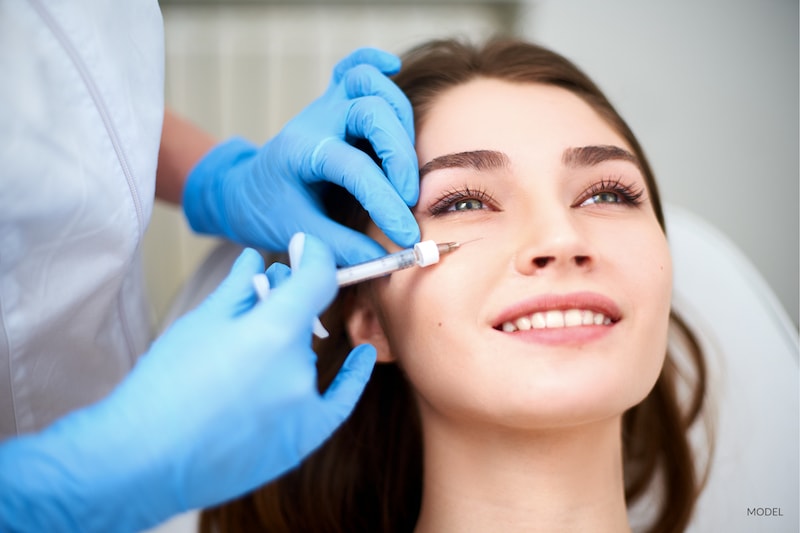3 Minute Read:
A question that comes up repeatedly is, “are there side effects with dermal fillers?” As with any cosmetic procedure, the answer is yes.
 Even though dermal fillers usually do not have significant side effects, that does not mean the chance of a complication is zero. The main side effects of dermal fillers include allergic reaction and post-injection filler movement. Dermal fillers may also cause long-term side effects if patients cease using them after a long period.
Even though dermal fillers usually do not have significant side effects, that does not mean the chance of a complication is zero. The main side effects of dermal fillers include allergic reaction and post-injection filler movement. Dermal fillers may also cause long-term side effects if patients cease using them after a long period.
What Are the Most Popular Types of Fillers?
There are different types of dermal fillers offered by Dr. Bridges. Each type is used to treat specific conditions in targeted areas of the body and use different active ingredients to restore volume to the treated tissues.
Hyaluronic Acid-Based Fillers
Hyaluronic acid fillers are among the most common types of dermal fillers used in the cosmetic field. They work by binding to the tissue in the targeted area, attracting moisture and causing the skin to produce more elastin, collagen, and hyaluronic acid over time. This results in skin that is tighter, stronger, and plumper.
Most side effects of hyaluronic acid-based filler are minor, with the possibility of redness, bruising, swelling, and the development of small bumps and protrusions under the skin. In rare cases, more serious allergic reactions can occur. Hyaluronic acid fillers are the least likely to move following injection.
Hyaluronic acid fillers are approved to treat all wrinkles, from fine lines to dynamic wrinkles. The RHA® Collection minimizes dynamic wrinkles and folds, such as nasolabial folds, when injected into the deep dermis. Because this filler uses a gentle manufacturing process and few chemicals, it helps to preserve your body’s natural structure of the hyaluronic acid.
Fat Based Fillers
Fat based dermal fillers are usually combined with other cosmetic procedures. They use a patient’s natural fat to enhance areas with reduced volume. This is ideal for patients with excess fat in other areas of their bodies.
Fat-based injections have the lowest risk of rejection or allergic reaction (and offer the longest results), but they also have the highest chance of moving following the injection. This can occur if the fat fails to bond with the surrounding tissues in the first few days following treatment.
What Are the Alternatives to Injectable Fillers?
For patients who no longer want the hassle of periodic injections, or who want long-term results without constant maintenance, facelift surgery is an ideal alternative. Where dermal filler injections last between three and 18 months, facelift surgery provides results that last between seven and 10 years.
Facelift surgery is also one of the only ways to repair skin that sags due to the long-term use of dermal fillers.
Interested in Learning More About the After Effects of Injectable Fillers in Shreveport?
If you are looking for information on dermal fillers, facelift surgery, or other cosmetic procedures, you may contact Bridges to Beauty at (318) 219-8555. You may also fill out our online contact form.

